NCERT Solution For EVS Class 4 Chapter 1 - Going to School
Class 4 EVS Chapter 1 provides a general overview of vehicles. It introduces the concept of transportation to the students. The young learners will learn about the different modes of transportation like vallam, camel-cart, bullock cart, bicycle and various kinds of bridges. presents the different types of routes one takes to go to their school—rocky roads, roads through forests, snowy roads, etc. Lastly, the sensitive topic of punishing students in school also finds a place in NCERT Class 4 EVS Chapter 1. The NCERT textbook (Looking Around) questions are answered in a simple and engaging manner.
Download PDF For NCERT Solutions for EVS Going to School
The NCERT Solution For EVS Class 4 Chapter 1 - Going to School are tailored to help the students master the concepts that are key to success in their classrooms. The solutions given in the PDF are developed by experts and correlate with the CBSE syllabus of 2023-2024. These solutions provide thorough explanations with a step-by-step approach to solving problems. Students can easily get a hold of the subject and learn the basics with a deeper understanding. Additionally, they can practice better, be confident, and perform well in their examinations with the support of this PDF.
Download PDF
Access Answers to NCERT Solution For EVS Class 4 Chapter 1 - Going to School
Students can access the NCERT Solution For EVS Class 4 Chapter 1 - Going to School. Curated by experts according to the CBSE syllabus for 2023–2024, these step-by-step solutions make EVS much easier to understand and learn for the students. These solutions can be used in practice by students to attain skills in solving problems, reinforce important learning objectives, and be well-prepared for tests.
Let us Do
Look around you—where all do you see the use of pulleys? List them.
We see pulleys around us, such as,
1. Wells with a pulley system to hoist buckets
2. Pulleys at construction sites to lift and place heavy materials
3. Crane
4. Bulldozer
Make a small bridge by tying 4 or 5 bamboo poles together. Ask your teacher to help you. Now walk on your bridge. How did you feel? Did you fall down? If you walk like this a few times, you will start finding it easy.
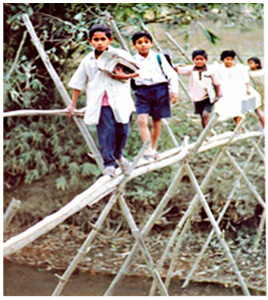
Yes, we made a bridge by tying 5 bamboo poles and started walking on it.
No, we did not fall down, and it was difficult only for the first few times.
Observe pictures 1 and 2. In the pictures, children are pulling the buckets from the well. Can you tell the difference in both the pictures? Which would be easier —using the pulley or not using it to lift things

Yes, I can see the difference in both pictures. In picture 1, the boy is manually lifting the bucket. But in picture 2, the boy is lifting the bucket with the help of a pulley.
Using a pulley would be easier to lift things.
Collect some bricks. Lay them on the ground in a line as shown in the picture. Try walking on them. Was it easy?
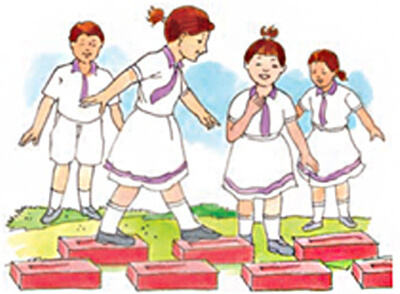
Not at all. It was really difficult to walk on the bricks. All the time we were walking, we had to balance ourselves.
Do you think it would be easier to walk on this bridge barefoot or with shoes or slipper? Why?
It was easy to walk on this bridge barefoot. With shoes on, we found it difficult to balance and walk on this bridge.
Cement Bridge
Imagine what difficulties there would be, if the bridge was not there?
If that bridge were not there, people would have to walk 1.5 km more to cross the same canal.
Find out what materials are used in making this bridge. List some of them.
The bridge is made up of—iron rods, cement, stone chips, and bricks.
Does the bridge seem to be old or is it new?
The bridge was built two years ago, so I can say it is almost new.
Who all use the bridge? Is it used by people on foot and also by vehicles and animals?
No, the bridge is only used by people as it is a narrow foot-bridge. Vehicles and animals are not allowed on that bridge.
Where is the bridge – over water, over a road, between two mountains or somewhere else?
The bridge is situated over a narrow canal which is a few meters away from my house.
Is there any bridge near your house? Find out more about the bridge.
Yes, there is a bridge nearby my house. The bridge was made two years ago. It is made up of concrete, iron rods and is blue in colour. It has five steps on both sides.
Find out from your grandparents, what kinds of bridges were there when they were young?
When my grandparents were young, there were mostly bamboo and wooden bridges.
Do you have to cross any bridge on the way to your school? If yes, what is the bridge like? Draw its picture.
Yes, I have to cross a bridge on the way to my school.
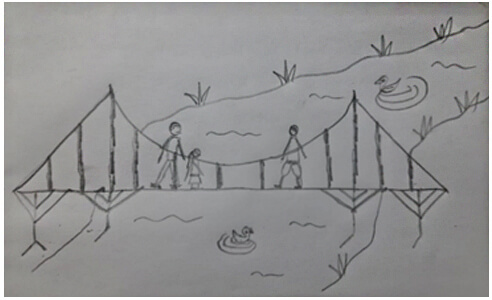
You have seen how children use different kind of bridges, to cross rivers and other uneven areas to reach school.
If you had a chance, which bridge would you like to use? Why?
If I had a chance, I would like to use the cement bridge, because cement bridges are strong and durable.
How many people do you think can cross the bridge at one time?
At least 5 to 8 people can cross the bridge at one time.
How is this bridge different from a bamboo bridge?
This bridge is different from a bamboo bridge because it is not made up of bamboo but rather iron rods, bricks and cement. This cement bridge has steps too.
Vallam
Can you think of other ways by which we can travel on water?
If the water body is not very large, we can use small steamers, motorboats and if it is large, we can travel by ships.
Have you seen any other kind of boats?
Other than small wooden boats, I have seen—motorboat, fishing vessel, catamaran, and cruise ship.
Camel-cart
How did you feel riding in the cart? Also share your experience in the class.
It was a wonderful experience indeed. But it was windy, and so, I was feeling a little bit cold.
Have you ever sat in a camel-cart or horse carriage (tonga)? Where? Did you climb on it yourself, or did someone help you?
I have never sat on a camel-cart, but I have sat on horse carriages.
I sat on a tonga when I went to my uncle’s house in Varanasi.
Nobody helped me as it was easy for me to climb on it.
Bullock-cart
Make a drawing of the cart in your notebook.
.
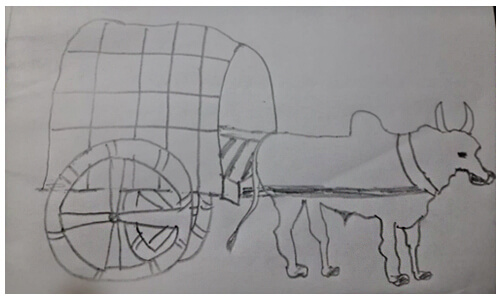
What kind of wheels do they have?
All bullock-carts have wooden wheels.
Do you have bullock-carts where you live?
Well, I have never seen bullock- carts in my locality. But last year I went for a picnic in a beautiful village with my family members where I saw many bullock-carts on the road.
Does it have a roof?
Yes, those bullock-carts had roofs.
Bicycle ride
Can you ride a bicycle? If yes, who taught you to ride?
Yes, I can ride a bicycle, and my uncle taught me how to ride a bicycle.
How many children come on bicycles to your school
The total number of students in my school is 800. Out of 800, around 350 students come by bicycle.
Jugad—What a Vehicle!
Do you have such vehicles in your area?
Yes, I have seen such vehicles in my locality.
Can you tell why it is called jugad?
A jugad is something which is made by putting together different parts of different objects. As the front part of this vehicle is made using a motorcycle, while the back portion is made by assembling wooden planks, it is called a jugad.
Would you like to ride in something like this? Why?
Honestly, I don’t want to ride on those vans because they cause huge sound pollution and jerk a lot too.
What do you call them in your area?
The correct answer is:
We call them motorised vans.
Children Cross the Jungle
Write your experiences in your notebook.
I went on a jungle safari last summer with my parents. There we went through a thick jungle in a jeep. We saw many birds, animals, butterflies and flowers. It was a bright sunny day, and the jungle looked beautiful. We were asked not to make any noise by our jeep driver because the animals and birds get disturbed by it.
Have you ever been in a thick jungle or any such place?
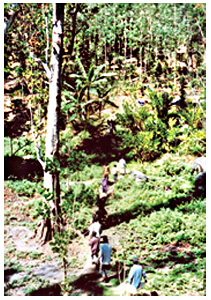
Yes, I have been to a thick jungle when I went for a vacation last summer.
Can you recognise some birds by their sounds? Can you imitate the sounds of some birds? Do it.
Yes, I can recognise some birds by their sounds, such as crow, cuckoo, parrot, woodpecker.
Moving on the Snow
Do you think that such places have snow all the time? Why?
No, I don’t think that such places have snow throughout the year. Snowfall happens only during the winter season, but in summer, the snow melts down.
Have you ever seen so much snow? Where? In films or somewhere else?
Yes, I have seen so much snow in the movies.
Rocky Paths
Which is the best month, in which you like to go to school? Why?
I like to go to school during April and May because many of my friends bring a variety of fruits from their home or collect raw mangoes and jamuns on the way to school. During recess, we share and eat those fruits.
Do you face difficulties on the way to your school?
No, I do not face difficulties on the way to my school since a well-constructed road is there. I usually go to school by cycle with my friends.
See Me Walk!
Go to a ground or an open space with your friends. Act the way you will walk in these situations.
- The ground is made of soft and smooth rose petals.
- The ground is covered with thorns and there is tall grass on the sides.
- The ground is covered with snow.
Was there a difference in the way you walked each time? Discuss. Talk and share about it
Yes, there was a difference in the way I walked each time.
- I faced no difficulty when I was walking on soft and smooth rose petals because the surface was very soft. I could even walk on that surface barefoot.
- When I was walking on thorns, and there was tall grass on the sides, I could not see the road properly, and I faced difficulty in walking. As it was a thorny road, I had to be very careful while walking.
- When the road was covered with snow, I slipped twice while walking. So, I had to balance and walk on the snow very carefully.
Talk and Share About It
How will you make a complaint?
I will write a letter to the Principal requesting them solve the matter.
Do you think that punishment should not be there in schools?
Yes, I think that there should be no punishment in schools
Do you also have punishment in your school? What kind?
No, I do not have punishments in my school. I do my homework and prepare my lessons every day. For those who do not complete their homework, teachers call their parents and complain.
Draw a picture of your ‘dream school’ in your notebook and write about it and share in the class.
My dream school would look like this. As I love to play games, there has to be a big playground in the school. The school should be three-storeyed. The teachers in my dream school will be friendly. They will teach us and also play with us. No student will be given any punishment in this school. Lastly my dream school has to be situated near my house, so that I can walk to school every day and reach on time.
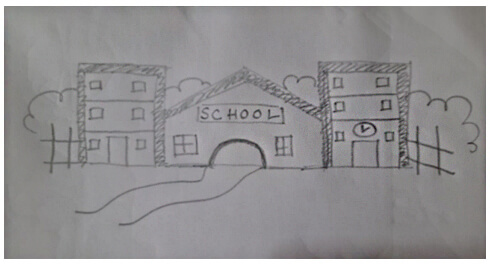
Is punishment the only solution to misdeeds? Make some rules for school to prevent misdeeds.
No, I do not think that punishment is the only solution to misdeeds. If the school management, teachers and everyone wants proper discipline in the school premises, they should mention everything in the school diary and also maintain a notice board for the students.
If you come across any such incident, whom will you inform?
Well, if I come across such incidents, I will inform my school’s Principal and my parents.
Admissions Open for 2025-26
Frequently Asked Questions
The NCERT solution for Class 4 Chapter 1: Going to School is important as it provides a structured approach to learning, ensuring that students develop a strong understanding of foundational concepts early in their academic journey. By mastering these basics, students can build confidence and readiness for tackling more difficult concepts in their further education.
Yes, the NCERT solution for Class 4 Chapter 1: Going to School is quite useful for students in preparing for their exams. The solutions are simple, clear, and concise allowing students to understand them better. They can solve the practice questions and exercises that allow them to get exam-ready in no time.
You can get all the NCERT solutions for Class 4 EVS Chapter 1 from the official website of the Orchids International School. These solutions are tailored by subject matter experts and are very easy to understand.
Yes, students must practice all the questions provided in the NCERT solution for Class 4 EVS Chapter 1: Going to School as it will help them gain a comprehensive understanding of the concept, identify their weak areas, and strengthen their preparation.
Students can utilize the NCERT solution for Class 4 EVS Chapter 1 effectively by practicing the solutions regularly. Solve the exercises and practice questions given in the solution.

